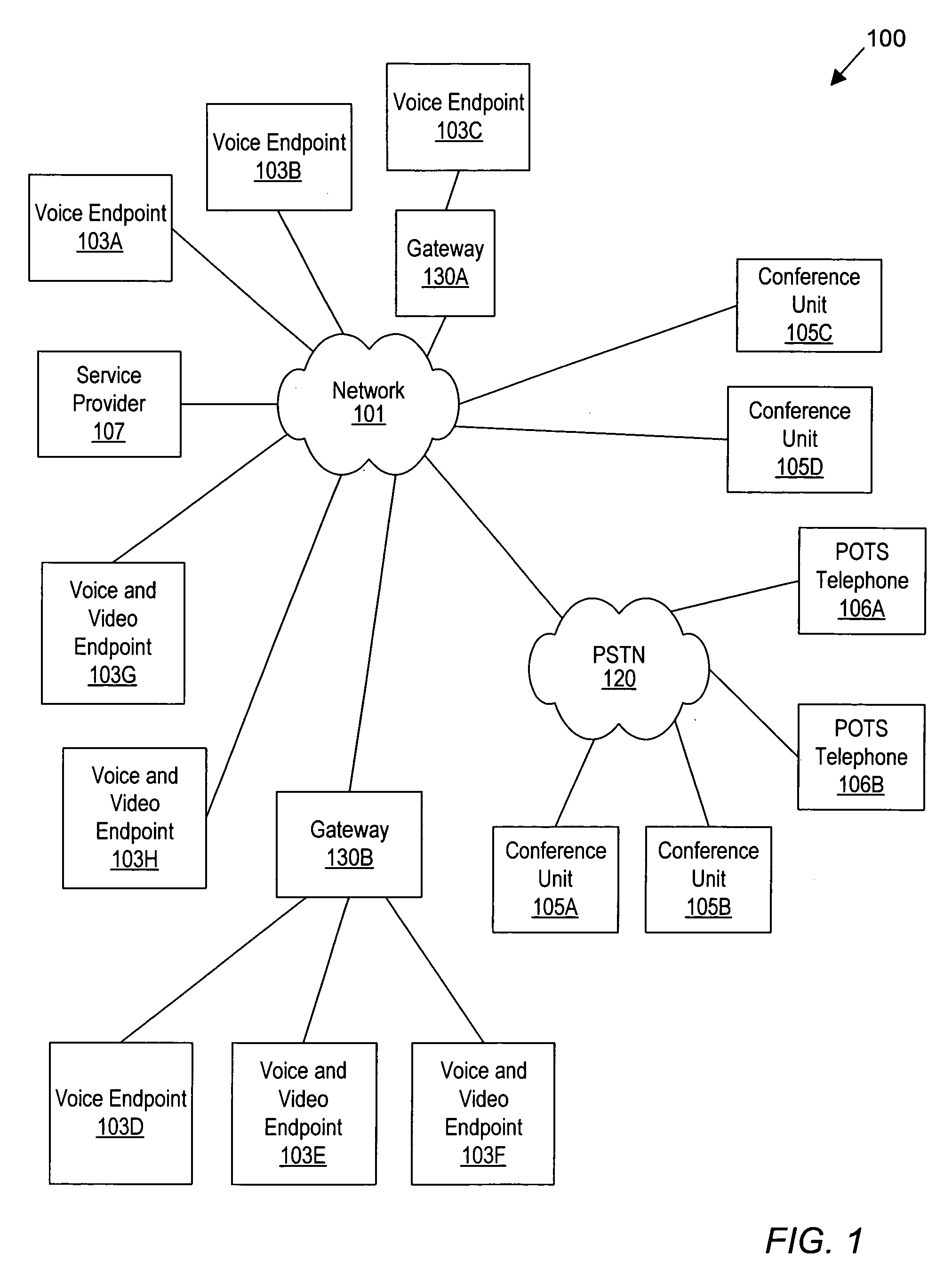Network conference communications
a network conference and communication technology, applied in the field of video conference systems, can solve the problems of poor or even unusable communication, packet corruption, and/or packet loss of ip traffic over the ip network, and the difficulty of placing and/or conducting conference calls (e.g., audio and/or video) over the internet protocol (ip) network
- Summary
- Abstract
- Description
- Claims
- Application Information
AI Technical Summary
Benefits of technology
Problems solved by technology
Method used
Image
Examples
Embodiment Construction
Incorporation by Reference
[0032] U.S. Provisional Patent Application titled “Speakerphone”, Ser. No. 60 / 619,303, which was filed Oct. 15, 2004, whose inventors are William V. Oxford, Michael L. Kenoyer, and Simon Dudley is hereby incorporated by reference in its entirety as though fully and completely set forth herein.
[0033] U.S. Provisional Patent Application titled “Speakerphone”, Ser. No. 60 / 634,315 which was filed Dec. 8, 2004, whose inventors are William V. Oxford, Michael L. Kenoyer and Simon Dudley which is hereby incorporated by reference in its entirety as though fully and completely set forth herein.
[0034] U.S. Provisional Patent Application titled “Video Conferencing Speakerphone”, Ser. No. 60 / 619,212, which was filed Oct. 15, 2004, whose inventors are Michael L. Kenoyer, Craig B. Malloy, and Wayne E. Mock is hereby incorporated by reference in its entirety as though fully and completely set forth herein.
[0035] U.S. Provisional Patent Application titled “High Definit...
PUM
 Login to View More
Login to View More Abstract
Description
Claims
Application Information
 Login to View More
Login to View More - R&D
- Intellectual Property
- Life Sciences
- Materials
- Tech Scout
- Unparalleled Data Quality
- Higher Quality Content
- 60% Fewer Hallucinations
Browse by: Latest US Patents, China's latest patents, Technical Efficacy Thesaurus, Application Domain, Technology Topic, Popular Technical Reports.
© 2025 PatSnap. All rights reserved.Legal|Privacy policy|Modern Slavery Act Transparency Statement|Sitemap|About US| Contact US: help@patsnap.com



